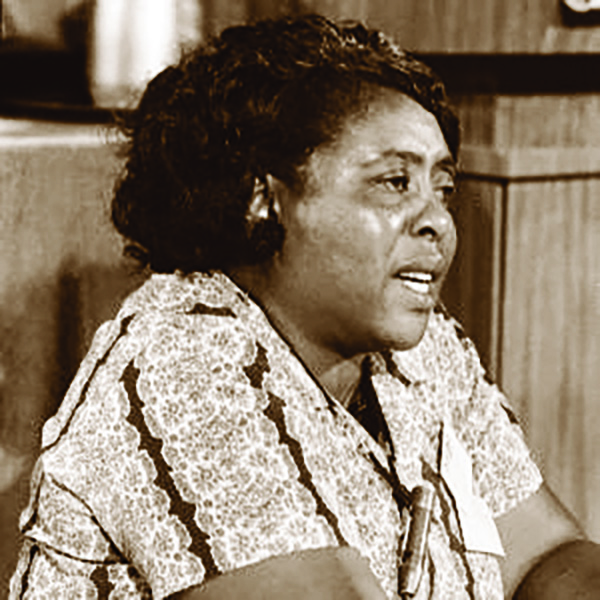Black History
“Resistance”: Access To The Ballot Fannie Lou Hamer: Organizer, Voting Rights Activist

By Jaelyn Scott
Winter Intern
New Journal and Guide
Fannie Lou Hamer was born on October 6, 1917, in Montgomery County, Mississippi to sharecroppers Lou Ella and James Townsend. She was the youngest of 20 children, and due to growing up in poverty she quickly started to pick cotton with her family starting at age 6 and wouldn’t start attending school until age 12. In 1944, she would go on to marry Perry ‘Pap’ Hamer, working alongside him on a Mississippi plantation owned by B.D. Marlow. Since she could read and write, she became a plantation timekeeper.
In 1961, Hamer was sterilized without her knowledge by a white doctor, after going in for a minor surgery to remove a uterine tumor. This practice was so common that it received the name, “Mississippi appendectomy.” Since she could no longer have her own children, she adopted two girls, and later adopted her two grandchildren after the eldest daughter passed away.
Her fight for voting rights started after she attended a meeting that was led by a civil rights activist named James Forman, who was a part of an organization called the Student Non-Violent Coordinating Committee (SNCC). On August 31, 1962, Hamer and 17 other volunteers traveled to the Indianola, Mississippi courthouse to register to vote. They were met with protest and only Hamer and one other man from the group were able to fill the application and take the literacy test, failing both. Afterwards they were harassed on the way back to their bus, which was later stopped by the police. The driver was arrested for the bus being “too yellow.”
When they returned home after paying the fines for the bus driver’s release, Hamer was fired from the plantation and was ordered off his land.
However, in the fall of 1962, things would start to look up for Hamer after her activism was noticed by local organizers of the SNCC. Bob Moses, the secretary of SNCC at the time, sent Charles Mclaurin, a young activist, to find and bring Hamer to another SNCC conference, this time being held at Fisk University in Nashville, where she would later become a community organizer. So, they packed whatever possessions they had and moved to Ruleville, where Hamer would work tirelessly for the desegregation and voter registrations.
Her fight for voter registration got harder, when on June 9, 1963, Hamer along with other Black women travelled to Charleston, South Carolina for a voter registration program. On the way back, the group decided to protest by sitting in a “whites-only” bus station restaurant in Winona, Mississippi.
The group got arrested, and were later brutally beaten by police in jail, leaving Hamer with lifelong damage such as a blood clot in her eye, kidney damage, and leg damage.
They were released three days later, but this wouldn’t stop Hamer’s fight for voter’s rights.
In April 1964, Hamer’s activism soared with her participation with SNCC and after co-founding the Mississippi Freedom Democratic Party, along with Lawrence Guyot, which challenged the local Democratic Party’s efforts to block Black Participation, During her time with the MFDP she tried to run for the Mississippi house of representatives, and after being barred from the ballot, she, along with Victoria Gray and Annie Devine, became the first Black women to stand in at the U.S. Congress after unsuccessfully protesting the Mississippi house election.
Later that year, they went to the Democratic National Convention in order to argue to be recognized as an official delegation, and they even had a conference with the Credentials Committee, a conference that President Lyndon Johnson tried to stop at the time by hosting his own press conference. Johnson was hoping Hamer wouldn’t get screen time, but his effort were futile, as Hamer’s words were so inspiring that they showed up on the evening news.
Hamer would later go on to keep protesting and fighting for voter’s rights forming organizations like the National Women’s Political Caucus in 1971, and the Freedom Farm Cooperative, which would become on of the largest employers in Sunflower County until its closure in the 1970s. She would continue fighting until her death in 1977 due to heart disease and breast cancer, being 59 years old.